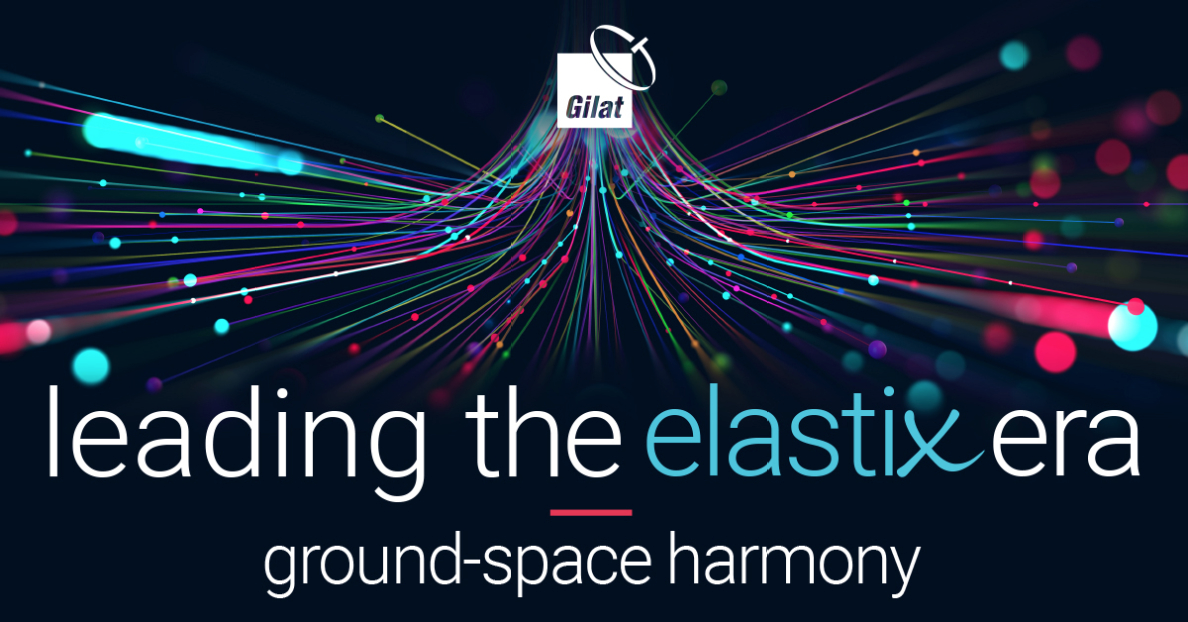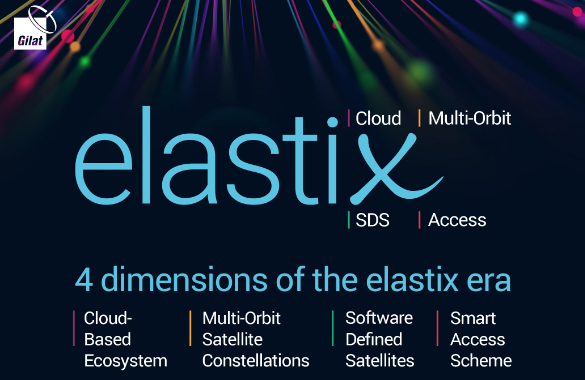The promise of next generation SATCOM
To meet the growing demands of a truly connected world, the satellite communication industry is going through a massive transformation. Customer requirements are increasingly larger, faster and more sophisticated. Very large, global, multi-orbit constellations are being launched and satellite capacity is growing faster than ever before. New verticals and geographic markets are being unlocked.

This next generation of satellite communication will enable ubiquitous connectivity for fixed and mobility sites anywhere at land, sea and air, will extend 5G networks and mobile Edge computing to serve remote sites and will enable mass market growth to connect IoT devices everywhere. Disruptive innovation is required to provide the needed higher throughput and flexibility. The main enabler of this revolution is the ability to provide orchestration and harmonization between the ground equipment and the whole new software-defined space.
This new, tighter integration between ground and space will no doubt make next generation communication more readily available, especially in remote areas of the world. However, in order to achieve this goal, ground and space segments must be equally agile, flexible and scalable. Together, they must evolve to deliver the scale, efficiency and performance needed to take advantage of all of these new capabilities. Here at Gilat we refer to this evolution as the Elastix Era.
Elasticity in satellite communication is more crucial than it’s ever been before. Having the ability to adapt, expand and deploy network resources in real-time is no longer a sales promise but an absolute necessity to maximize the capabilities of next generation satellite technology. More specifically, in the Elastix Era, space and ground segment satellite communication providers are developing solutions that work in harmony, being dynamic, programmable, streamlined, efficient and scalable.
The Elastix Era is composed of four dimensions to deliver on the promise of next generation satellite communication:
1) Multi-Orbit Satellite Constellations
2) Software-Defined Satellites
Author: Hagay Katz, Chief Product and Marketing Officer, Gilat Satellite Networks The Elastix Era Of Satellite Communications
3) Cloud-Based Ecosystem
4) Smart Access Scheme
Allowing elasticity across these dimensions enables an order of magnitude increase in speed and capacity with efficient resource allocation both in the satellite and on the ground. Moreover, the Elastix Era enables elastic capacity allocation per end user service profiles, and accordingly optimizes costs.
1. Multi-Orbit Satellite Constellations
A key dimension of the Elastix Era of satellite communication is the expansion from GEO satellites to include Non-GEO Stationary (NGSO) constellations. The increase in orders of magnitude of bandwidth (Very High Throughput Satellites — VHTS) and the introduction of low latency orbits opens satellite communication to unprecedented opportunities that include ubiquitous 5G coverage, high throughput applications such as demanded on cruise ships and airplanes, as well as opportunities for delay-sensitive applications.

Elastix Era technology must address the multi-orbit operation of any satellite constellation, Medium Earth Orbit (MEO) or Low Earth Orbit (LEO), including seamless handovers between orbits, implementing ‘make before break’ for an uninterrupted and transparent user experience.
GEO, MEO and LEO constellations will continue to live in harmony as complementary technologies, each with their own advantages. It is important to enable multi-orbit, per application and per region configuration with varied service options and to deliver orbit redundancy. The elastic multi-orbit operation must allow users to continue to enjoy uninterrupted service that is completely oblivious to the orbit switch.
2. Software-Defined Satellites
The next major dimension of the Elastix Era is the innovation of Software Defined Satellites (SDS) that influence and shape next generation satellite communication.
SDS have the elastic capabilities to modify beams, bandwidth, power and connectivity as needed. The smart satellites of the Elastix Era allow for programmable Software Defined Networks (SDN) that support on-the-fly changes to optimally address dynamic network changes. To accommodate SDN, the ground segment plays a major role in providing complimentary elasticity to enable the required dynamics from such networks in several ways:
First, scalability will be enabled with any beam structure and at any demand allocation. This gives a great advantage for network scaling not limited by beam coverage, bandwidth and peak throughput. Scalability enables a ground infrastructure that is better optimized to reduce costs with smaller footprint, while capacity is added only as network use increases. This includes accommodation of day-one operation over a large coverage area, scaling up with increased bandwidth, an increase in users and expanded geographic coverage, as well as support during the network maturity phase and accommodating ongoing, changing demands.
Furthermore, the Elastix Era architecture must also allow dynamic capacity steering of resources between beams to answer real-time changes in terminals throughput demand over specific geographic locations. No longer will it be required to allocate the maximum needed carrier size and compute power ahead of time. The inefficient “design to peak usage” will no longer be relevant. Allocation of resources is elastic at the point where demand meets accurate supply.
3. Cloud-Based Ecosystem
Another key dimension of the Elastix Era is the cloud-based ecosystem. The rising power of elastic cloud computing helps businesses improve their internal processes. They obtain better results, improve operational efficiency and, ultimately, increase the bottom line.
Cloud infrastructure optimizes the hardware needs of data centers, providing enormous elasticity; organizations don’t need to buy and maintain the latest hardware devices or maintain their own data centers when scaling up or down their operations. The common infrastructure management tasks such as scaling, scheduling, patching and provisioning are handled by cloud providers; therefore, businesses can focus their time and effort on the business logic specific to their applications or processes.
Cloud solutions correctly select and assign the right resources to a workload or application in order to achieve optimal efficiency. The resources are scalable and elastic in near-real-time and are metered by use. Systems will be primarily software, demand-based with efficient and dynamic network scalability. Resources will be used only as needed to meet surges in demand as they arise.

In the next generation of satellite communication systems, cloud elasticity will be the way things are done. Virtualization and the ability to work seamlessly in a cloud environment will support a cloud infrastructure and flexible data-throughput, thereby providing significant improvements to the economies of scale. Furthermore, one of the greatest benefits of the cloud is its flexible business model; the ability to pay based on what you use is of course most relevant for the Elastix Era.
The ground segment joins the game with a cloud based elastic architecture leveraging cloud technologies. This will enable satellite operators to have a ground segment that can be easily integrated into the common computing infrastructure. In turn, operators will have the ability to scale up/down based on the real-time network needs and thus increase their operational efficiency and reduce operational costs.
4. Smart Access Scheme
The fourth dimension of the Elastix Era is a highly efficient smart access scheme. The access scheme needs to be elastic to be able to answer a variety of needs that include high-throughput all the way to very low throughput for applications such as IoT. Furthermore, the smart access scheme must address dynamic changes in the satellite network either due to physical conditions or changing needs. Network utilization must be optimized in the Elastix Era more than ever before with speeds that are moving from Kbps to Gbps on a single terminal, with fast and dynamic adaption to change with maximum efficiency.
The architecture of the ground segment in the Elastix Era must have a single technology that can answer the varying needs of multiple applications and dynamic needs. The actual required bandwidth must be identified, adjusted and controlled to provide the best quality of service with maximum cost savings. The availability of the satellite link must be maintained for best service availability, with continuous power adjustments, to most efficiently and dynamically reduce modulation codes to maintain service quality.
Change for the Better
The Elastix Era will go a long way in bridging the digital divide; billions of devices will now be able to access low latency real-time applications that will unleash new market opportunities where satellite communication was previously unfeasible or commercially challenging. It will support bandwidth intensive applications such as 5G, cellular backhaul, video conferencing, tele-medicine, banking/trading, IoT aggregation and other cloud-based applications. It will also add additional communication capabilities to markets already using satellite connectivity including maritime, commercial/business aviation, education, government and rich media services.

Gilat Satellite Networks is driving innovation of the ground segment to address the Elastix Era. To accommodate multi-orbit constellations, software defined satellites, gigabits of capacity and ubiquitous connectivity, a new, virtualized elastic architecture is required. This new architecture will support cloud infrastructure and flexible data-throughput on the access scheme, network orchestration capabilities and tight harmony between ground and space.
www.gilat.com

Hagay Katz serves as Gilat’s Chief Product and Marketing Officer. Prior to joining Gilat, he served as VP Strategic Accounts — Cyber Security at Allot Communications (Nasdaq – ALLT) . Previously, he served as Gilat’s Head of the VSAT Line of Business. In this period, Gilat became the world leader for LTE cellular and commercial In-Flight broadband Connectivity over satellite. Earlier in his career, Hagay held numerous senior positions in Sales, Marketing and Product Management. Hagay started his career in an elite technology unit of the IDF and is the co-author of nine granted patents. Hagay holds a BSc and MSc in Electronic Engineering from Tel-Aviv University and an MBA from Monash University.


